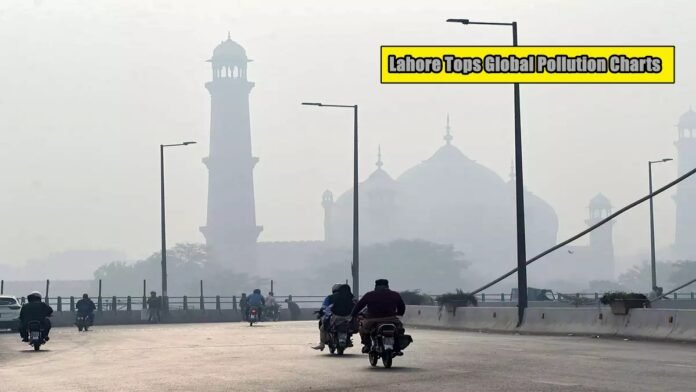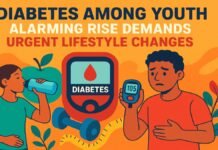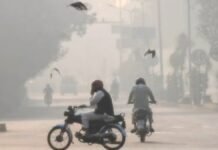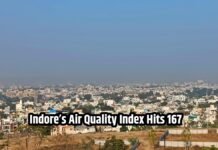
Key Points:
- Lahore ranks as the most polluted city in the world with an AQI of 354, classified as “hazardous,” while Karachi ranks 13th with an AQI of 164.
- Over 18 lakh individuals in Lahore have fallen ill due to smog-related respiratory problems, with 1.2 lakh seeking hospital treatment.
- Vehicular emissions account for up to 80% of Lahore’s pollution and 60% of Karachi’s, according to environmental experts.
- Karachi’s air quality deterioration endangers residents, especially those with pre-existing health conditions.
- A measles outbreak in Pakistan has added to health concerns, particularly affecting malnourished and unvaccinated children.
Islamabad: Pakistan’s major cities, Lahore and Karachi, are grappling with severe air pollution, posing a dire threat to public health. According to the latest Air Quality Index (AQI) report by IQAir, Lahore has become the world’s most polluted city with an AQI of 354, a level deemed “hazardous.” Meanwhile, Karachi, the country’s largest metropolis, ranks 13th on the global pollution index with an AQI of 164, categorized as “unhealthy.”
Lahore’s Pollution Crisis
With a population exceeding 11 million, Lahore has long struggled with poor air quality, mainly attributed to vehicular emissions, industrial activities, and crop burning, according to the Express Tribune. The smog, which intensifies during the winter months, has led to a health crisis, affecting millions.
- Health Impact: In just one month, 18,86,586 individuals in Lahore reported illnesses due to smog. Among them, 1,29,229 required hospital treatment for respiratory problems, while daily cases of chest pain, respiratory issues, and strokes reached over 69,399.
- Broader Health Concerns: Over 61 lakh individuals have been diagnosed with cardiothoracic conditions exacerbated by the worsening air quality.
Karachi’s Struggles with Unhealthy Air
Karachi, Pakistan’s bustling economic hub, is also bearing the brunt of pollution. Its AQI of 164 places it in the “unhealthy” category, with pollution sources including heavy port traffic, industrial activities, and vehicular emissions.
Despite government initiatives, Karachi’s air quality continues to deteriorate, posing significant risks to residents, especially those with existing health issues such as asthma and heart conditions.
Key Causes of Pollution
At a recent press conference at the Karachi Press Club, Yasir Hussain, Director of the Climate Action Centre (CAC), highlighted the role of vehicular emissions in worsening air quality.
- Pollution Sources: Hussain revealed that emissions from petrol and diesel vehicles account for 80% of Lahore’s pollution and 60% of Karachi’s.
- Call for Action: Experts are urging the government to implement stricter vehicle emission standards and promote public transportation to mitigate the crisis.
Outbreak of Measles Amid Health Emergency
Adding to the health challenges, a measles outbreak has raised alarm during the winter season. Health experts report a surge in cases marked by cold, fever, cough, red eyes, and skin rashes.
- Impact on Vulnerable Groups: Malnourished, immunocompromised, and unvaccinated children are at the highest risk of complications or fatalities.
- Vaccination Drive: Doctors emphasize the need for parents to ensure children are vaccinated between the ages of nine months and one-and-a-half years to curb the outbreak.

A Call for Urgent Action
The twin crises of air pollution and seasonal diseases underline the urgent need for a comprehensive environmental and healthcare strategy in Pakistan. Without immediate action to address the root causes of pollution and enhance public health systems, cities like Lahore and Karachi will continue to face dire consequences.





















































